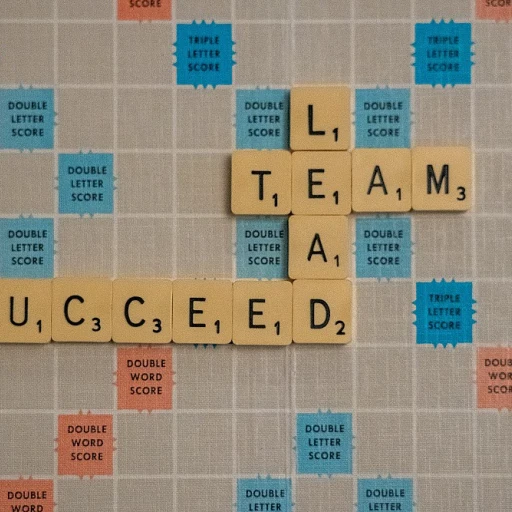
Understanding the Role of Great Teammates
Defining the Essence of a Great Teammate
In any successful team, the role of a great teammate is pivotal. These individuals are not just participants; they are the glue that holds the team together, ensuring that everyone works towards a common goal. Great teammates possess qualities that go beyond mere technical skills. They are the ones who inspire, motivate, and elevate the performance of those around them.
Being a great teammate involves more than just showing up. It requires a deep understanding of the dynamics within the team and the ability to adapt to different situations. A good teammate knows when to lead and when to follow, balancing their own ambitions with the needs of the team. This balance is crucial in creating a harmonious work environment where everyone feels valued and respected.
Qualities That Make a Great Teammate
- Communication: Open and honest communication is the cornerstone of any great team. Teammates who communicate effectively can resolve conflicts, share ideas, and provide constructive feedback.
- Collaboration: Working well with others is essential. Great teammates are willing to collaborate, share responsibilities, and support each other in achieving team goals.
- Adaptability: The ability to adapt to changing circumstances and roles is a hallmark of a great teammate. They are flexible and can handle unexpected challenges with ease.
- Empathy: Understanding and empathizing with team members fosters a supportive environment. Great teammates are considerate of others' feelings and perspectives.
- Commitment: Dedication to the team's success is non-negotiable. Great teammates are committed to their roles and are willing to put in the time and effort needed to achieve collective goals.
For those looking to build exceptional team players, it's important to focus on these qualities. By fostering an environment that encourages communication and collaboration, teams can thrive. Moreover, recognizing and rewarding team contributions can further enhance team dynamics, as discussed in other sections of this article.
To delve deeper into strategies for building great teams, consider exploring resources like crafting an effective engagement calendar for your team. This can provide valuable insights into organizing and maintaining team engagement over time.
The Importance of Communication and Collaboration
Communication: The Backbone of Successful Teams
For great teams to function effectively, communication is essential. The best teammates understand how critical it is to express themselves clearly and listen actively. It's more than just talking; it's about sharing ideas, concerns, and solutions constructively. Effective communication fosters a team atmosphere where players feel their voices are heard and valued.
Collaboration: Strength in Unity
Collaboration goes hand-in-hand with communication for team success. In both high school teams and professional environments, collaboration enables great teams to leverage the collective skills of their members. When team members work together towards a common goal, they can achieve outcomes that far surpass what individual players could accomplish on their own.
Building Trust Through Open Dialogue
Open dialogue within teams creates a foundation of trust, allowing great teammates to discuss challenges and celebrate successes openly. This environment encourages team members to contribute their best without fear of judgment or reprisal, aligning well with a team's privacy policy and user agreement principles. The dynamics of team temperature play a significant role in maintaining this open environment, where trust is nurtured, and teammates feel confident.
The Role of a Team Leader
A team leader or coach acts as a facilitator of communication and collaboration. They set the tone for how team members interact and often lead by example in fostering a culture of transparency and mutual respect. Whether in youth sports or the corporate world, team leaders help cultivate the conditions for each player and teammate to thrive, ultimately contributing to the team's overall success.
Strategies for Fostering a Supportive Work Environment
Creating a Culture of Support and Growth
Building a supportive work environment is crucial for cultivating great teammates. It encourages a sense of unity among team players and fosters growth both on an individual and collective level. By emphasizing respect, trust, and open communication, work environments can be transformed to better support team dynamics. A supportive environment begins with valuing the input of each team member. When teammates feel heard and involved, they become more motivated to contribute their best efforts. This creates a cycle where the team thrives together, and no one feels left behind. Here are some key strategies to establish a supportive work atmosphere:- Promote Open Communication: Encourage team members to express their thoughts and ideas freely. This facilitates transparency and allows for collaborative problem-solving — an essential trait of great teams.
- Implement Structured Feedback: Regularly scheduled feedback sessions can help team players identify their strengths and areas for improvement. This can be done through both formal and informal settings, allowing athletes to reflect and grow.
- Celebrate Team Milestones: Recognizing accomplishments builds morale and strengthens bonds between teammates. Celebrating small victories along the journey keeps the team motivated.
- Provide Opportunities for Professional Development: Equip teammates with resources to help them advance their skills. Whether through workshops or coaching sessions, opportunities for growth are vital. Dive deeper with effective corporate training videos to enhance engagement.
Recognizing and Rewarding Team Contributions
Appreciating Contributions for Building a Cohesive Team
Recognizing and rewarding team contributions is crucial in fostering a healthy and productive team dynamic. Acknowledging the efforts of your teammates not only boosts morale but also encourages them to keep pushing their limits. It’s essential for team leaders to practice appreciation regularly to nurture a supportive climate where everyone feels valued and respected. One effective way to show appreciation is through regular team meetings where achievements are highlighted. This creates an opportunity for team members to celebrate successes and learn from each other’s experiences. During these meetings, ensure that every great teammate gets a moment in the spotlight, regardless of their playing time or role in the team. Another approach is to implement a recognition program tailored to your team's unique characteristics. Rewards don't always have to be monetary; they can include additional responsibilities that align with an individual’s strengths, opportunities for professional development, or simple gestures like personalized notes of appreciation. The goal is to motivate players to continue contributing to their teams great success. Don’t overlook the power of verbal appreciation; a coach’s sincere acknowledgment can go a long way toward boosting a teammate's confidence. To maintain the focus on collaborative success rather than individual accolades, draw attention to team achievements as well. Highlight how the collective effort leads to overall team success. This encourages teammates to support one another and reinforces the value of teamwork in achieving great results. Remember, cultivating a culture of recognition must be consistent and genuine. If team members feel that praise isn’t authentic, it could have the opposite effect and lead to disengagement. By leading by example and fostering an environment of appreciation, you can coach your team towards becoming exceptional team players in both the work environment and beyond. In line with promoting a supportive environment, also consider addressing challenges in team dynamics positively, as it can prevent potential conflicts from eroding the progress made through recognition and reward strategies.Addressing Challenges in Team Dynamics
Mastering Team Challenges for Success
In any workplace, challenges in team dynamics can become roadblocks for progress. To foster great teams, it's important to recognize these hurdles and address them head-on.
Disagreements, if not managed, can fracture team spirit, much like a rift in a well-practiced group of athletes. Team leaders must act as coaches here, understanding the root causes. Open lines of communication are vital in identifying underlying issues and resolving them.
Another significant challenge is promoting inclusivity and ensuring all voices are heard. Teams thrive when everyone feels valued. A good teammate knows that every player is essential. By embracing diversity, teams become better, more innovative, and adaptable.
Lack of accountability can also disrupt team cohesion. Establishing clear roles and expectations ensures all team members understand their responsibilities. It's crucial to foster an environment where teammates hold each other accountable, just as athletes do in a locker room.
Time management often poses a challenge for teams. Team leaders should help players balance their workloads efficiently, distributing playing time fairly and ensuring that no single person feels overwhelmed.
Coaching and development play a major role in navigating these challenges. By offering opportunities for growth and learning, team leaders inspire their players to become even greater teammates, building a cohesive unit ready for any challenge.













